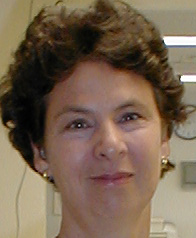| Writing
a Short Story Based on Kindred
Project URL:
http://teachersnetwork.org/teachnet-lab/fklane/pmaslow/ kindred.htm
How it works:
As students read Kindred, by
Octavia Butler, they become any character except the main character, who is
telling the story. As the character, the students write 13 journals or
letters and tell what is happening in the book. The students post these
journals or letters on the class online discussion forum, where they can
read each other's writing and respond.
Students also go online to explore a list of
links (provided by the teacher) on slavery in the USA. They look at all the
links and choose the ones that interest them most, read these thoroughly,
then summarize at least 5 links and note for which research they recommend
reading these links. Furthermore, they can use historical details from these
links for their own short stories which they will write based on a few
aspects of Kindred.
For the short story, there is a chart with
all the literary terms they must illustrate, such as plot, characters,
conflict, theme, setting. They also include historical details from the
antebellum South and have a modern character who goes back in time. These
stories go through several drafts before they are posted on the school's web
site for all to see.
In order for students to understand and
recognize literary terms, they are discussed in class in relation to the
novel. We discussed in depth themes, characterization, and character
conflicts, as well as searching for historical details in Kindred about the antebellum South and slavery.
Standards:
Technology: Students will use computer
applications for word processing, publishing
work to a virtual classroom space, and reviewing teacher-developed
materials; navigate the Internet efficiently to locate specified relevant
sites, employ the Internet as a research tool and resource, compile, analyze
and evaluate the data collected while visiting an Internet site, use
critical thinking and established research skills to evaluate the
credibility and appropriateness of web sites and the validity of the
information available at the sites.
Language Arts: Students produce
written work that makes connections to related topics or information. They
critique their own writing and a classmate's writing, revise drafts, and
publish to a wide audience. They provide evidence of critiquing a public
document. They use both primary and secondary sources of information for
research. They recognize a range of literary elements and techniques and use
these elements to interpret the work. They recognize the relevance of
literature to contemporary and/ or personal events and situations. They
write their own imaginative texts using plot, character, setting, dialogue,
conflict to engage the reader. They maintain a consistent point of view,
first or third person.
Social Studies: Understands how
the past affects our private lives and society in general; knows how to
perceive past events with historical empathy; analyzes the effects specific
decisions had on history; understands that the consequences of human
intentions are influenced by the means of carrying them out.
Materials used:
Students used a class discussion forum available
free to teachers at
nicenet.org. Also used was an Internet connection, a browser, and a word
processing program.
The Students:
The students were sophomores with a wide
range of ability. Often the more advanced students in computer technology
spontaneously helped those with little previous experience.
Overall Value:
The idea of studying slavery may be repugnant
to some teachers and students, but it was quite amazing how most students
became involved in reading the novel even though some of them initially
though it would not interest them. This topic should be studied, especially
in the light of a recent movement to pay the relatives of former slaves
reparations. The hideous facts of this country's history should not be
hidden, but exposed alongside the unfortunate histories of many countries
such as South Africa, Argentina, Serbia, and Sudan.
By becoming different characters and posting
their writing as those characters, students are using their imagination and
sharing their knowledge with each other.
Students are spared several hours of finding
links on slavery by using the teacher's already listed links. But they learn
what the URLs mean and how to use these URLs in the future for further
research on different topics. They also learn more historical details and
background on the topic of slavery, which is the basis for the novel. They
can also use historical details they choose for their own short story.
Writing the short story provides students
with the opportunity to use literary terms they have identified in the
fiction they read as well as use their imagination.
Tips:
The chart created on the web page for the
students to help them write the short story seemed to allay anxieties about
their ability to write their own story. The novel seems fairly long to some
students to read (264 pages); students who read slowly will need adequate
time to finish reading assignments.
|

Peggy Maslow has been teaching
English and using technology at Franklin K. Lane High School for 16 years.
At first she used basic TRS 80 computers and gradually she has moved up to
using the Internet and web-authoring tools in her lessons with students.
E-mail: pmaslows@gmail.com
Estimated Class Periods To Complete: 10
or more
Subject areas: English, Social Studies
Beginning Grade Level: 9
Ending Grade Level: 12 |